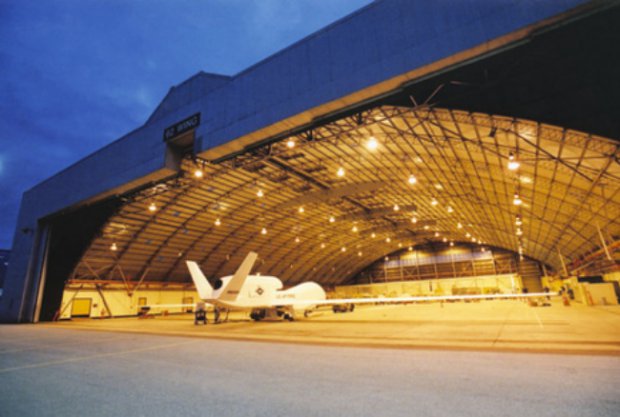A US Air Force Block 10 Global Hawk unmanned aircraft, built by Northrop Grumman, completed its last mission in late May. The last Block 10 to fly as an Air Force aircraft was the one with the most flight hours, more than 7,650 with more than 7,000 of those hours flown providing surveillance for our combat troops.
“For many years Block 10 Global Hawks have persistently performed countless missions in support of the war-fighter and in support of disaster relief efforts,” said George Guerra, HALE Systems vice president, Northrop Grumman Aerospace Systems. “While the aircraft have concluded their missions and support for the Air Force, they will now support missions for the US Navy.”
The US Air Force (USAF) is transferring its seven Block 10 aircraft for use by other government agencies. Currently, three were transferred to the U.S. Navy to continue to support the Broad Area Maritime Surveillance Demonstration (BAMS-D) programme and two were transferred for museum static displays.
In August, the Navy awarded Northrop Grumman a $35.5 million annual contract for continued operations and maintenance for the BAMS-D aircraft.
All seven Air Force Block 10 Global Hawks are fully operational. The Block 10 made its first flight on Sept. 9, 2003. Since then, Air Force Block 10 aircraft flew 2,141 missions for 35,528 hours, 89 per cent of which were in support of combat operations. In addition to combat missions, the aircraft supported disaster response teams addressing forest fires, earthquakes, hurricanes and floods and also provided support to the U.S. counter-drug mission.
After DARPA’s initial seven ACTD aircraft, the Air Force contracted with Northrop Grumman to build nine Block 10s as a transitional capability until the larger Block 20 configuration could begin production. Two of the Block 10 aircraft were acquired for the Navy BAMS-D programme in the original procurement programme.
The US Air Force has deployed Block 30 Global Hawks to support the missions once supported by Block 10 aircraft. The Block 30 Global Hawks currently deployed are equipped with the Raytheon Enhanced Integrated Sensor Suite (EISS). EISS includes electro optical/infrared and synthetic aperture radar. Within the next year, the Block 30 aircraft will be reconfigured to include Northrop Grumman’s multi-intelligence sensor package, the Airborne Signals Intelligence Payload, in addition to EISS.
Source: Press Release

